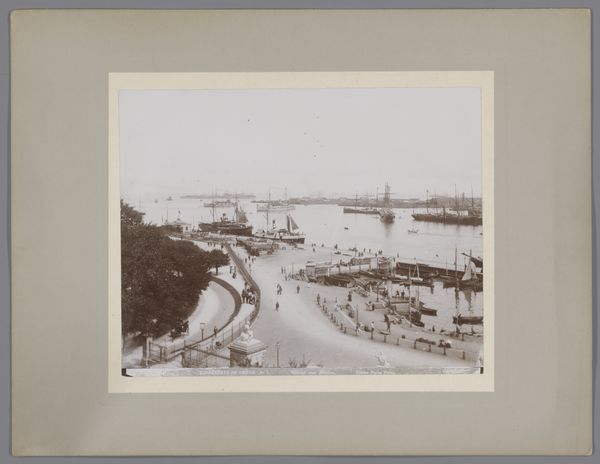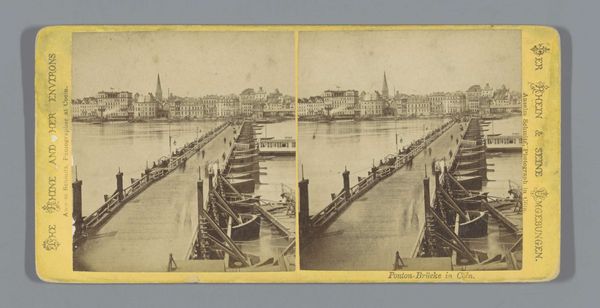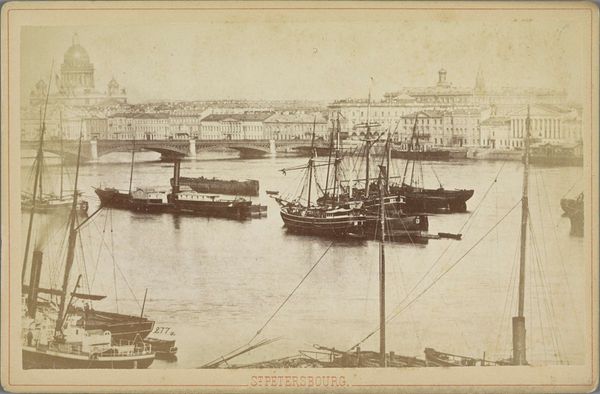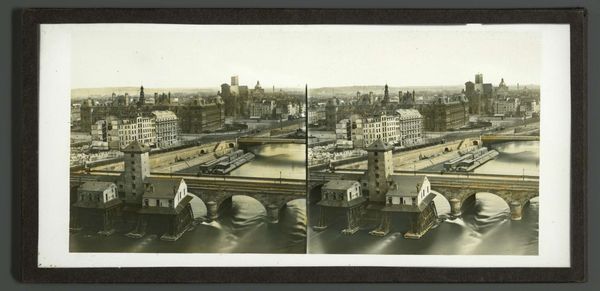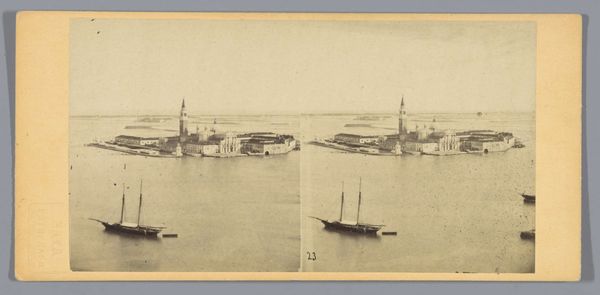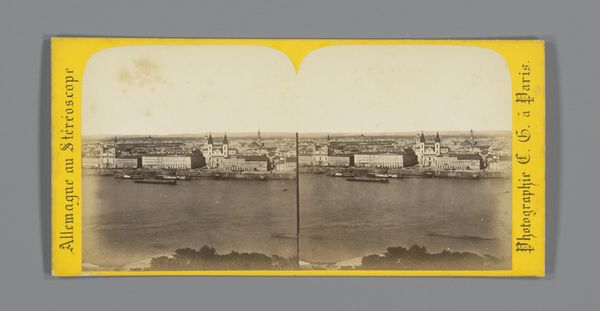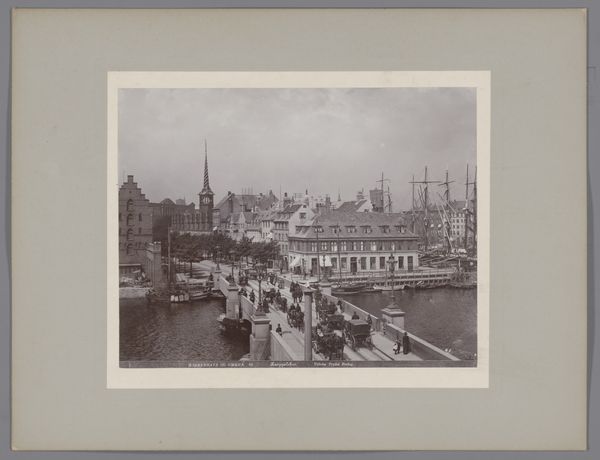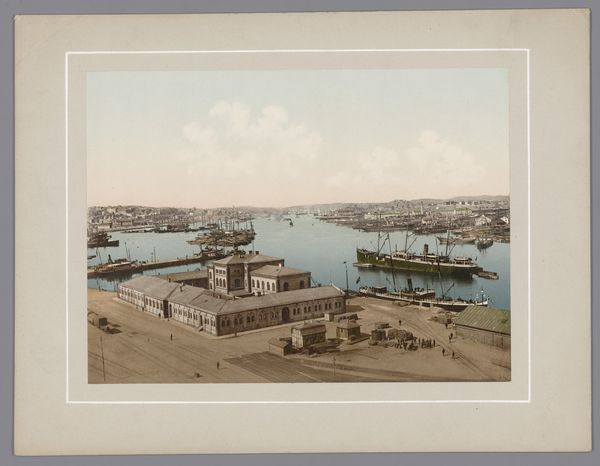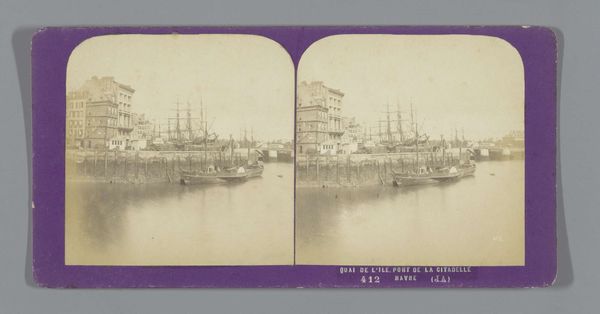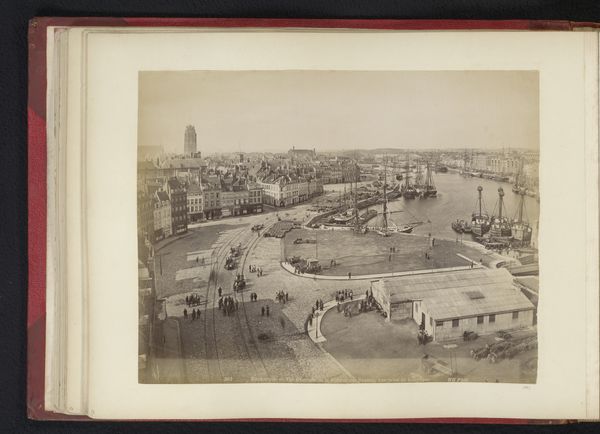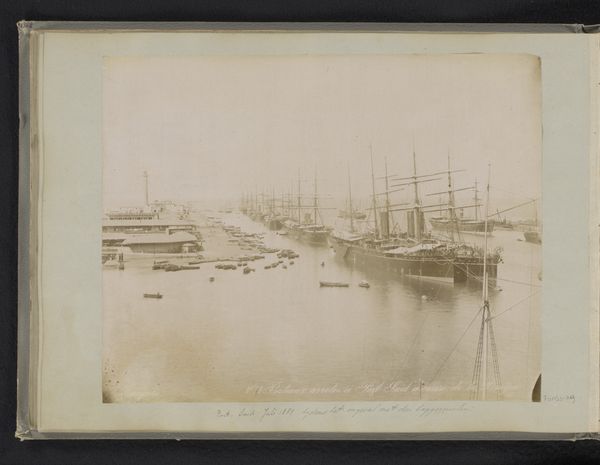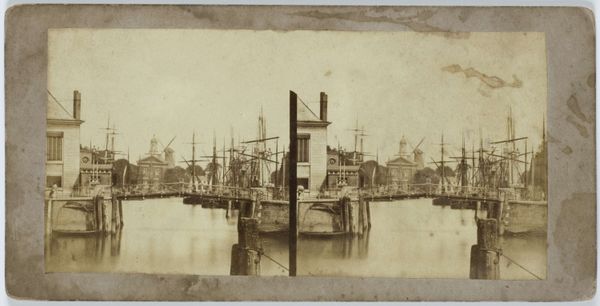
#
tall virtical shape
#
homemade paper
#
paper non-digital material
#
incomplete sketchy
#
paper texture
#
book mockup
#
unrealistic statue
#
folded paper
#
publication mockup
#
paper medium
Dimensions: height 82 mm, width 170 mm
Copyright: Rijks Museum: Open Domain
Curator: This photographic print captures "Gezicht op Santa Lucia in Napels, Italië," offering a view of Santa Lucia in Naples. Ferrier Père-Fils et Soulier, a prolific photography studio, likely produced this between 1860 and 1870. The sepia tones and meticulous composition immediately caught my attention. What stands out to you? Editor: Initially, the density of the scene is striking. So many boats clustered in the harbour. The buildings seem secondary, almost like a backdrop to the intense maritime activity. It presents a sense of a busy port, teeming with commerce. Curator: Absolutely, and the materiality enhances that sense. The print itself—likely an albumen print given the date—bears witness to the chemical processes of early photography. Each print a tangible outcome of skilled labor. Consider the labor needed to haul the cameras and equipment, develop on site, and transport images. Editor: Thinking more of the image as a structure, there's a stark contrast between the intricate details of the boats and the blocky architectural forms. It almost presents the scene as a stage, foregrounding the harbour activity in front of this flat cityscape. Curator: That brings up interesting socio-economic contexts. Early photography was limited to the upper classes due to expensive technologies and labor, and Naples was a common stop for tourists on the Grand Tour. These images served to cater this niche, helping the growth of Italian tourism sector as the production capabilities rapidly advanced. Editor: Precisely! These works reinforced existing social structures of labor in terms of photographic production and tourist consumption. Semiotically, the boats could signify transition. What I am fascinated with, is how the horizon intersects so precisely the skyline of the cityscape creating that perfect composition we often see during that time period. It leads to think that even documentary images must be arranged in such a way as to deliver maximum structural potential. Curator: Indeed. Reflecting on it, viewing the landscape of production practices through photography also allows us to examine broader relations between photographic workshops and technological advancements to illustrate changes in social systems and ways of living at that time. Editor: From my perspective, appreciating such photographic compositions calls for a better engagement and focus on all structural and semiotic properties of the art. It creates an atmosphere for interpretation beyond simple observation and provides the necessary layers of meanings within a piece.
Comments
No comments
Be the first to comment and join the conversation on the ultimate creative platform.

